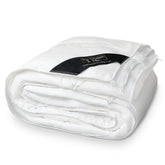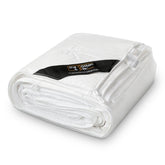Diverse Bedding Practices Around the World
It's fascinating to observe the various ways in which people across different cultures use bed sheets and duvet covers.
In the US, for instance, it's common for people to employ a flat sheet underneath a comforter or blanket to cover themselves. Therefore, a flat sheet is also called a top sheet. On the contrary, in many Asian and European cultures, the flat sheet serves as the bottom layer directly on the mattress, sometimes placed atop a bed skirt or fitted sheet.
In Asian and European settings, duvet covers play a pivotal role. Rather than using a flat sheet / top sheet underneath a comforter, they use a duvet cover to completely protect a duvet insert or a comforter. People in these regions typically sleep under the duvet cover for added comfort and hygiene. They change the duvet cover periodically. And they don’t need to battle with the top/flat sheet moving around during sleep. I've seen more and more people in the US adapting to duvet covers. Some still use a top/flat sheet underneath the duvet (cover) and change the sheets more often but the duvet cover less often.

This diversity in bedding practices adds a unique cultural touch to something as commonplace as making a bed, showcasing the rich tapestry of traditions that influence even the smallest aspects of our daily lives.
For those unfamiliar with duvet covers, they are typically crafted from two pieces of cloth and feature a zipper or buttons for insertion of a duvet insert. A high-quality duvet cover often conceals the closure with meticulous sewing. Personally, I prefer a zipper due to its ease of use and the hygienic feeling of complete closure.
Whether you use a top sheet or a duvet cover, there's no right or wrong choice—just personal preference, each with its own set of pros and cons.






